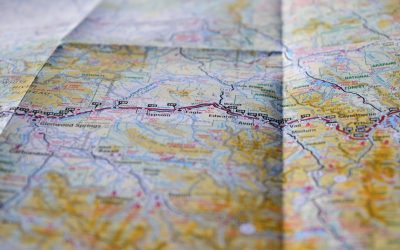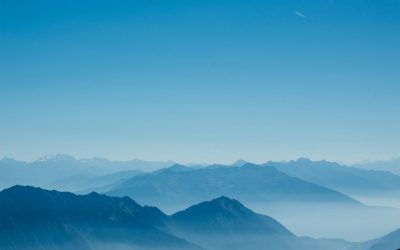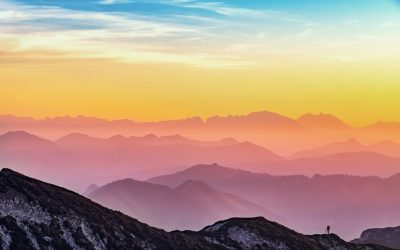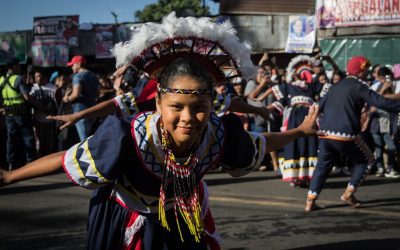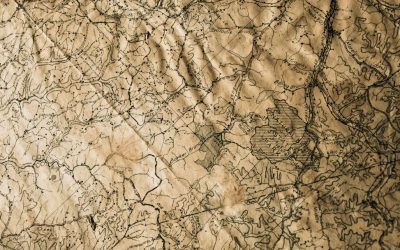World Geography
Geography is the study of the Earth’s landscapes, environments, and the relationships between people and their surroundings. It encompasses both the physical aspects of the Earth, such as its landforms, bodies of water, and climate, as well as the human aspects, including population distribution, cultures, and economies. World geography is a broad field that seeks to understand the complexities of our planet and how humans interact with it. By studying world geography, we can gain a deeper appreciation for the diversity of our planet and the interconnectedness of its various regions.
Geography is a multidisciplinary field that draws on elements of physical science, social science, and humanities. It involves the use of maps, spatial analysis, and geographic information systems (GIS) to understand the Earth’s surface and the processes that shape it. World geography also encompasses the study of human geography, which examines the ways in which people and their activities are distributed across the Earth. By understanding world geography, we can better appreciate the environmental, cultural, and economic challenges facing different regions of the world. This knowledge is crucial for addressing global issues such as climate change, resource management, and international development.
The Five Oceans and Seven Continents
The Earth’s surface is divided into five major oceans: the Pacific, Atlantic, Indian, Southern (or Antarctic), and Arctic Oceans. These vast bodies of water play a crucial role in regulating the Earth’s climate and supporting diverse marine ecosystems. The oceans also serve as important transportation routes and a source of food and other natural resources for human societies around the world.
In addition to the oceans, the Earth’s landmasses are divided into seven continents: Africa, Antarctica, Asia, Europe, North America, Australia (or Oceania), and South America. Each continent has its own unique physical and cultural characteristics, shaped by millions of years of geological processes and human history. From the deserts of Africa to the rainforests of South America, the continents offer a rich tapestry of landscapes and environments for exploration and study.
Major Mountain Ranges and Deserts
The Earth’s surface is also marked by major mountain ranges and deserts that have shaped the planet’s physical and cultural landscapes. The Himalayas, for example, are the highest mountain range in the world and are home to diverse ecosystems and cultures in countries such as India, Nepal, and Bhutan. The Andes in South America, the Rockies in North America, and the Alps in Europe are other prominent mountain ranges that have influenced human settlement patterns and economic activities.
Deserts cover about one-third of the Earth’s land surface and are characterized by low precipitation and extreme temperatures. The Sahara Desert in Africa is the largest hot desert in the world, while the Gobi Desert in Asia is one of the largest cold deserts. Deserts are not only home to unique flora and fauna but have also been important trade routes and cultural crossroads throughout history.
Climate Zones and Biomes
The Earth’s climate is influenced by a variety of factors, including latitude, altitude, ocean currents, and prevailing winds. As a result, the planet is divided into different climate zones, each with its own characteristic weather patterns and ecosystems. The equator, for example, experiences a tropical climate with high temperatures and heavy rainfall, while the polar regions have a cold and dry climate.
These climate zones give rise to different biomes, or large ecological areas characterized by distinct plant and animal communities. The tropical rainforest biome, found near the equator, is home to a diverse array of species and is vital for regulating the Earth’s climate. The grasslands biome, found in regions such as the African savannah and North American prairies, supports grazing animals and has been important for human agriculture throughout history.
Human Geography and Population Distribution
Human geography examines the ways in which people and their activities are distributed across the Earth’s surface. It encompasses topics such as population growth, migration patterns, urbanization, and cultural diversity. Understanding human geography is crucial for addressing global challenges such as poverty, inequality, and environmental degradation.
Population distribution is uneven across the world, with some regions experiencing rapid population growth while others are declining. The majority of the world’s population lives in Asia, particularly in countries such as China and India. Urban areas are also growing rapidly, with more than half of the world’s population now living in cities. This trend has significant implications for infrastructure development, resource management, and social inequality.
Historical and Cultural Geography
Historical geography examines how human activities have shaped the Earth’s landscapes over time. It explores topics such as colonialism, trade routes, and the rise and fall of empires. Cultural geography focuses on how human cultures have developed in different regions of the world and how they interact with their environments.
The Silk Road, for example, was an ancient trade route that connected China with Europe and facilitated the exchange of goods, ideas, and technologies across Eurasia. This historical trade route had a profound impact on the development of cultures and economies along its path. Similarly, cultural geographers study how different societies have adapted to their environments through practices such as agriculture, architecture, and religious beliefs.
The Importance of Geographic Knowledge
Geographic knowledge is crucial for addressing global challenges such as climate change, resource management, and international development. By understanding world geography, we can better appreciate the environmental, cultural, and economic challenges facing different regions of the world. This knowledge is crucial for addressing global issues such as climate change, resource management, and international development.
Geographic knowledge also helps us to understand our interconnectedness with other regions of the world. By studying world geography, we can gain a deeper appreciation for the diversity of our planet and the interconnectedness of its various regions. This understanding can foster a sense of global citizenship and empathy for people from different cultures and backgrounds.
In conclusion, world geography is a complex and multifaceted field that encompasses both physical and human aspects of the Earth’s landscapes. By studying world geography, we can gain a deeper appreciation for the diversity of our planet and the interconnectedness of its various regions. This knowledge is crucial for addressing global challenges such as climate change, resource management, and international development. It also helps us to understand our interconnectedness with other regions of the world and fosters a sense of global citizenship.
FAQs
What is world geography?
World geography is the study of the Earth’s landscapes, environments, and the relationships between people and their environments. It encompasses the physical features of the Earth, as well as the human activity that takes place on it.
Why is world geography important?
World geography is important because it helps us understand the world around us. It provides insights into the physical and human processes that shape our planet, and helps us make informed decisions about how to interact with our environment.
What are the main branches of world geography?
The main branches of world geography include physical geography, which focuses on the Earth’s natural features and processes, and human geography, which examines the relationships between people and their environments.
How does world geography impact our daily lives?
World geography impacts our daily lives in numerous ways, from influencing the weather and climate we experience, to shaping the availability of natural resources and influencing the distribution of populations and cultures around the world.
What are some key concepts in world geography?
Key concepts in world geography include location, place, human-environment interaction, movement, and region. These concepts help geographers understand and interpret the world around them.
Political Boundaries of Eswatini: Provinces, Districts, or Historical Boundaries.
Eswatini, formerly known as Swaziland, is a landlocked country located in Southern Africa. It is bordered by Mozambique to the northeast and South Africa to the west, south, and southeast. The political boundaries of Eswatini are defined by these international borders, which have been established through historical treaties and agreements. The country’s political boundaries also include internal divisions such as provinces and districts, which play a significant role in governance and administration. Understanding the political boundaries of Eswatini is essential for comprehending the country’s history, governance, and future challenges. Summary Eswatini is a landlocked country in Southern Africa, bordered by Mozambique to the northeast and South Africa to the west, south, and southeast. The country is divided into four administrative regions, known as provinces, which are further divided into 55 tinkhundla (districts). Eswatini’s historical boundaries have evolved over time, with changes in colonial rule and the country’s independence in 1968. The political boundaries of Eswatini have had a significant impact on the country’s governance, including the distribution of resources and representation. Future challenges and opportunities for Eswatini’s political boundaries include the need for equitable development and the potential for regional integration in Southern Africa. Provinces of Eswatini Eswatini is divided into four administrative regions known as provinces. These provinces are Hhohho, Manzini, Shiselweni, and Lubombo. Each province is further divided into smaller administrative units called districts, which are responsible for local governance and administration. The provinces of Eswatini are not only important for administrative purposes but also play a crucial role in the distribution of resources and development projects. Each province has its own unique characteristics and challenges, making...
History of Eswatini
Eswatini, formerly known as Swaziland, has a rich and diverse history that dates back to the early Stone Age. The earliest inhabitants of the region were the San people, who were hunter-gatherers and lived a nomadic lifestyle. They were later displaced by the Bantu-speaking people who migrated from the north and settled in the area. These Bantu-speaking people formed the foundation of the Swazi nation and established a kingdom in the 18th century under the leadership of King Ngwane The Swazi people were known for their strong sense of unity and their ability to resist external influences. They developed a unique culture and social structure that revolved around the monarchy and the extended family system. The Swazi kingdom expanded its territory through conquest and diplomacy, and by the 19th century, it had become a significant regional power in southern Africa. The arrival of European settlers and traders in the 19th century brought about significant changes to the region, leading to conflicts and the eventual colonization of Eswatini by the British. Summary Eswatini, formerly known as Swaziland, has a rich early history dating back to the 18th century, with the establishment of the Dlamini clan and the formation of the Swazi nation. The country was colonized by the British in the late 19th century and gained independence in 1968, with King Sobhuza II becoming the head of state and leading the nation through significant political changes. King Sobhuza II’s reign, which lasted over 60 years, saw the country transition from colonial rule to independence and the establishment of a traditional monarchy with significant political power. Eswatini has experienced political changes...
Terrain and Topography of Eswatini: mountains, valleys, and plains.
Eswatini, a small landlocked country in Southern Africa, is known for its diverse and stunning terrain and topography. The country is characterised by a varied landscape, which includes majestic mountains, serene valleys, and vast plains. The terrain and topography of Eswatini play a crucial role in shaping the country’s natural environment, wildlife, and agriculture. Understanding the different geographical features of Eswatini is essential for appreciating the country’s unique beauty and understanding the challenges and opportunities it presents. Eswatini’s terrain and topography are a result of geological processes that have shaped the land over millions of years. The country is located in the eastern part of Southern Africa, and its landscape is dominated by the Lebombo Mountains in the east and the Highveld in the west. The diverse terrain and topography of Eswatini have been influenced by factors such as tectonic activity, erosion, and climate change. This has resulted in a landscape that is both rugged and beautiful, with a wide range of natural features that make Eswatini a truly unique destination for nature lovers and adventurers alike. Summary Eswatini’s terrain and topography are diverse, ranging from majestic mountains to vast plains and serene valleys. The majestic mountains of Eswatini offer breathtaking views and are home to unique flora and fauna. The serene valleys of Eswatini provide a peaceful and picturesque landscape, attracting visitors and wildlife alike. The vast plains of Eswatini are essential for agriculture and provide habitat for a variety of wildlife. The diverse terrain and topography of Eswatini play a crucial role in supporting the country’s rich wildlife and agricultural activities. The Majestic Mountains of Eswatini Eswatini...
Natural Resources of Eswatini: Where Natural Resources are located In Eswatini
Eswatini, a small landlocked country in Southern Africa, is blessed with a variety of natural resources that contribute to its economy and the livelihoods of its people. The country’s natural resources include mineral deposits, agricultural land, forests, water bodies, and diverse wildlife. These resources play a crucial role in the country’s development and provide opportunities for economic growth and sustainability. Eswatini’s natural resources are essential for the country’s food security, energy production, and environmental conservation. However, the sustainable management of these resources is vital to ensure their long-term availability and to mitigate the impact of climate change and other environmental challenges. Eswatini’s natural resources are a source of pride and heritage for its people, and they are an integral part of the country’s cultural identity. The diverse range of natural resources in Eswatini provides opportunities for sustainable development and economic growth. However, the exploitation of these resources must be carefully managed to ensure their preservation for future generations. The government of Eswatini recognises the importance of sustainable management of natural resources and has implemented policies and regulations to protect and conserve these valuable assets. Through responsible stewardship and effective governance, Eswatini aims to harness the potential of its natural resources while safeguarding them for the benefit of current and future generations. Summary Eswatini is rich in natural resources, including mineral, agricultural, forestry, water, and wildlife resources. The country’s mineral resources include coal, diamonds, and iron ore, which have the potential to contribute significantly to the economy. Eswatini’s agricultural resources are diverse, with a focus on subsistence farming and the production of sugarcane, citrus fruits, and forestry products. The forestry...
Cultural or Historical Sites of Eswatini: Important Cultural Landmarks or Historical Sites in Eswatini
Eswatini, formerly known as Swaziland, is a small landlocked country in Southern Africa known for its rich cultural heritage and stunning natural landscapes. The country is home to a number of cultural and historical sites that offer visitors a glimpse into the traditional way of life and the history of the Swazi people. From the Great Usuthu River and the Mantenga Falls to the Mantenga Cultural Village and the King Sobhuza II Memorial Park, Eswatini’s cultural and historical sites are a testament to the country’s vibrant past and its enduring traditions. Whether you’re interested in learning about the Swazi monarchy, exploring traditional Swazi architecture, or experiencing the country’s diverse wildlife, Eswatini’s cultural and historical sites have something to offer for every type of traveller. Eswatini’s cultural and historical sites are not only important for preserving the country’s heritage, but they also play a crucial role in promoting tourism and economic development. These sites attract visitors from all over the world, providing an opportunity for cultural exchange and economic growth. By showcasing the country’s rich history and traditions, Eswatini’s cultural and historical sites help to create a greater understanding and appreciation of the Swazi culture. Additionally, these sites contribute to the preservation of traditional crafts, music, and dance, ensuring that these important aspects of Swazi culture are passed down to future generations. Overall, Eswatini’s cultural and historical sites are an integral part of the country’s identity and offer a unique opportunity for visitors to immerse themselves in the rich tapestry of Swazi culture and history. Summary Eswatini is home to a rich cultural and historical heritage, with many sites that...
Population Density of Eswatini
Eswatini, formerly known as Swaziland, is a small landlocked country located in Southern Africa. It is bordered by South Africa to the west and Mozambique to the east. With a total area of just over 17,000 square kilometers, Eswatini is one of the smallest countries in Africa. Despite its size, Eswatini is home to a diverse population and a rich cultural heritage. The country is known for its stunning landscapes, including the majestic mountains of the Drakensberg range and the picturesque valleys of the Lowveld region. Eswatini is also famous for its traditional ceremonies and festivals, which are an integral part of the country’s cultural identity. The capital city of Eswatini is Mbabane, while the largest city is Manzini. Eswatini has a mixed economy, with agriculture, manufacturing, and services playing key roles in the country’s development. Summary Eswatini, formerly known as Swaziland, is a small landlocked country in Southern Africa. Population density refers to the number of people living in a specific area, usually measured in square kilometres. Factors affecting population density in Eswatini include topography, climate, economic opportunities, and government policies. The population in Eswatini is unevenly distributed, with the majority of people living in the western and central regions of the country. High population density in urban areas can lead to increased pressure on resources and infrastructure, while low population density in rural areas can impact access to services and development. What is Population Density? Population density refers to the number of people living in a given area, usually expressed as the number of individuals per square kilometer. It is a key demographic indicator that provides insights...
Climate Zones Of Estonia: Different climate regions Of Estonia
Estonia, a small country in Northern Europe, is known for its diverse climate zones. The country is divided into four main climate regions: coastal, continental, maritime, and subarctic. Each of these regions has its own unique characteristics and influences the weather patterns and environmental conditions in the country. Estonia’s climate is greatly influenced by its proximity to the Baltic Sea and the Gulf of Finland, as well as its northern latitude. The combination of these factors results in a wide range of temperatures, precipitation levels, and weather patterns throughout the year. Understanding the different climate zones in Estonia is essential for understanding the country’s environment, agriculture, and overall way of life. Summary Estonia has four main climate zones: coastal, continental, maritime, and subarctic. The coastal climate region experiences mild winters and cool summers due to the influence of the Baltic Sea. The continental climate region has cold winters and warm summers, with large temperature variations throughout the year. The maritime climate region has mild winters and cool summers, with high humidity and frequent precipitation. The subarctic climate region has short, cool summers and long, cold winters with heavy snowfall. Coastal Climate Region The coastal climate region in Estonia is characterized by mild winters and cool summers. This region is heavily influenced by the Baltic Sea, which helps to moderate temperatures throughout the year. The proximity to the sea also results in higher levels of precipitation, particularly during the autumn and winter months. The coastal region is home to a variety of plant and animal species that thrive in the moist and temperate climate. The mild temperatures and ample rainfall...
Political Boundaries of Estonia: Provinces, Districts, or Historical Boundaries.
Estonia, a small country in Northern Europe, is known for its rich history and unique political boundaries. The country is bordered by the Gulf of Finland to the north, the Baltic Sea to the west, Latvia to the south, and Russia to the east. Estonia’s political boundaries have evolved over the centuries, influenced by various historical, cultural, and geopolitical factors. The country is divided into 15 counties, which are further divided into municipalities and parishes. These political boundaries play a crucial role in shaping the governance and administration of the country, as well as its cultural and social dynamics. Estonia’s political boundaries have been shaped by its complex history, which includes periods of foreign rule and occupation. The country has been influenced by various empires and kingdoms, including the Swedish, Danish, German, and Russian. These influences have left a lasting impact on Estonia’s political boundaries, as well as its cultural and linguistic diversity. The country’s unique position at the crossroads of Eastern and Western Europe has also played a significant role in shaping its political boundaries. Estonia’s strategic location has made it a coveted territory throughout history, leading to numerous border changes and territorial disputes. As a result, Estonia’s political boundaries have been subject to constant evolution and adaptation, reflecting the country’s dynamic and diverse heritage. Summary Estonia’s political boundaries are defined by its borders with Russia, Latvia, and the Baltic Sea. The country is divided into 15 counties, each with its own government and administrative structure. Within these counties, there are 79 municipalities, which are further divided into 213 administrative units. Estonia’s historical boundaries have shifted over time...
Terrain and Topography of Estonia: mountains, valleys, and plains.
Estonia, a small country in Northern Europe, is known for its diverse and unique terrain and topography. The country is characterized by its flat coastal lowlands, rolling plains, hilly landscapes, and numerous rivers and valleys. The terrain of Estonia has been shaped by various geological processes over millions of years, resulting in a landscape that is both beautiful and diverse. From the coastal areas to the inland regions, Estonia’s terrain offers a wide range of natural features that make it a fascinating destination for nature lovers and outdoor enthusiasts. Estonia’s terrain is largely influenced by its location on the eastern coast of the Baltic Sea. The country is bordered by Latvia to the south and Russia to the east, and its coastline stretches for over 3,700 kilometers, making it the longest coastline of any Baltic state. The terrain of Estonia is also influenced by its glacial history, with much of the landscape being shaped by the movement of glaciers during the last Ice Age. As a result, Estonia’s terrain is characterized by a mix of flat coastal lowlands, rolling plains, and hilly landscapes, creating a diverse and varied topography that is unique to the region. With its rich geological history and diverse natural features, Estonia’s terrain offers a wealth of opportunities for exploration and discovery. Summary Estonia’s terrain is characterized by a diverse landscape of coastal lowlands, plains, hills, valleys, and river systems. The coastal lowland and plains of Estonia are located in the northern part of the country and are known for their sandy beaches and limestone cliffs. The hilly landscape of Estonia is found in the southern...
History of Estonia
Estonia’s history dates back to the early settlements of the indigenous Finno-Ugric tribes, such as the Estonians, Livonians, and Setos. These tribes lived in the region for thousands of years, developing their own unique culture and traditions. The Viking Age, which began in the late 8th century, had a significant impact on Estonia’s history. The Vikings, known for their seafaring and trading skills, established trade routes along the Baltic Sea and made contact with the indigenous tribes of Estonia. This contact led to cultural exchange and the introduction of new technologies and ideas to the region. During the Viking Age, Estonia became a target for Viking raids, leading to conflicts between the indigenous tribes and the Viking invaders. The Vikings established settlements along the coast of Estonia and engaged in trade with the local population. This period of contact with the Vikings had a lasting impact on Estonia’s culture and language, with many words of Scandinavian origin being incorporated into the Estonian language. The Viking Age also saw the establishment of the first towns and trading centers in Estonia, laying the foundation for the region’s future development as a hub for trade and commerce. Summary Early settlements in Estonia date back to around 8500 BC, and the Viking Age brought significant influence and trade to the region. The medieval period saw the Teutonic Order establish control over Estonia, leading to centuries of German influence and rule. Swedish and Russian rule followed, with Estonia becoming a part of the Russian Empire in the early 18th century. Estonia declared independence in 1918, leading to the Estonian War of Independence against Soviet...
Natural Resources of Estonia: Where Natural Resources are located In Estonia
Estonia, a small country in Northern Europe, is blessed with a diverse range of natural resources that have played a significant role in shaping its economy and culture. From lush forests and abundant water resources to valuable mineral deposits and fertile agricultural land, Estonia’s natural resources have been a source of wealth and sustenance for its people for centuries. The country’s strategic location on the Baltic Sea has also made it a hub for trade and commerce, further enhancing the importance of its natural resources. In this article, we will explore the various natural resources that Estonia is endowed with and their impact on the country’s development and prosperity. Summary Estonia is rich in natural resources, including forests, oil shale, peat, water resources, agricultural land, and biodiversity. Forests and timber are a significant natural resource in Estonia, covering over half of the country’s land area and providing economic and environmental benefits. Oil shale is a key energy resource in Estonia, used for electricity production and heating, but it also poses environmental challenges due to its high carbon emissions. Estonia has significant peat and mineral deposits, which are important for the country’s economy and provide opportunities for sustainable resource management. Water resources and wetlands are abundant in Estonia, supporting diverse ecosystems and providing important habitats for wildlife. Forests and Timber Estonia is home to extensive forests that cover over half of its land area, making it one of the most forested countries in Europe. The country’s forests are predominantly composed of pine, spruce, birch, and aspen trees, which not only provide a habitat for diverse wildlife but also serve as...
Cultural or Historical Sites of Estonia: Important Cultural Landmarks or Historical Sites in Estonia
Estonia, a small Baltic country in Northern Europe, is a land of rich cultural and historical heritage. From medieval old towns to pristine national parks, Estonia offers a diverse range of cultural and historical sites that showcase the country’s unique identity and traditions. The country’s tumultuous history, marked by periods of foreign rule and occupation, has shaped its cultural landscape, resulting in a fascinating blend of influences from various European powers. This article will explore some of Estonia’s most significant cultural and historical sites, shedding light on the country’s rich heritage and the stories behind these iconic landmarks. Summary Estonia is home to a wealth of cultural and historical sites that showcase its rich heritage. The Old Town of Tallinn is a UNESCO World Heritage Site, offering a glimpse into Estonia’s medieval past. Lahemaa National Park is a treasure trove of natural beauty and cultural heritage, preserving Estonia’s diverse landscapes and historical sites. The Song Festival Grounds are a testament to Estonia’s musical and cultural traditions, hosting the renowned Estonian Song Festival. The Kumu Art Museum is a must-visit for art enthusiasts, displaying Estonia’s artistic heritage and contemporary works. The Old Town of Tallinn: A UNESCO World Heritage Site The Old Town of Tallinn, Estonia’s capital city, is a well-preserved medieval gem that has earned its place as a UNESCO World Heritage Site. With its cobblestone streets, historic buildings, and imposing city walls, the Old Town is a living testament to Estonia’s medieval past. The town’s origins date back to the 13th century when it was established by the crusading knights of the Teutonic Order. Over the centuries, Tallinn...
